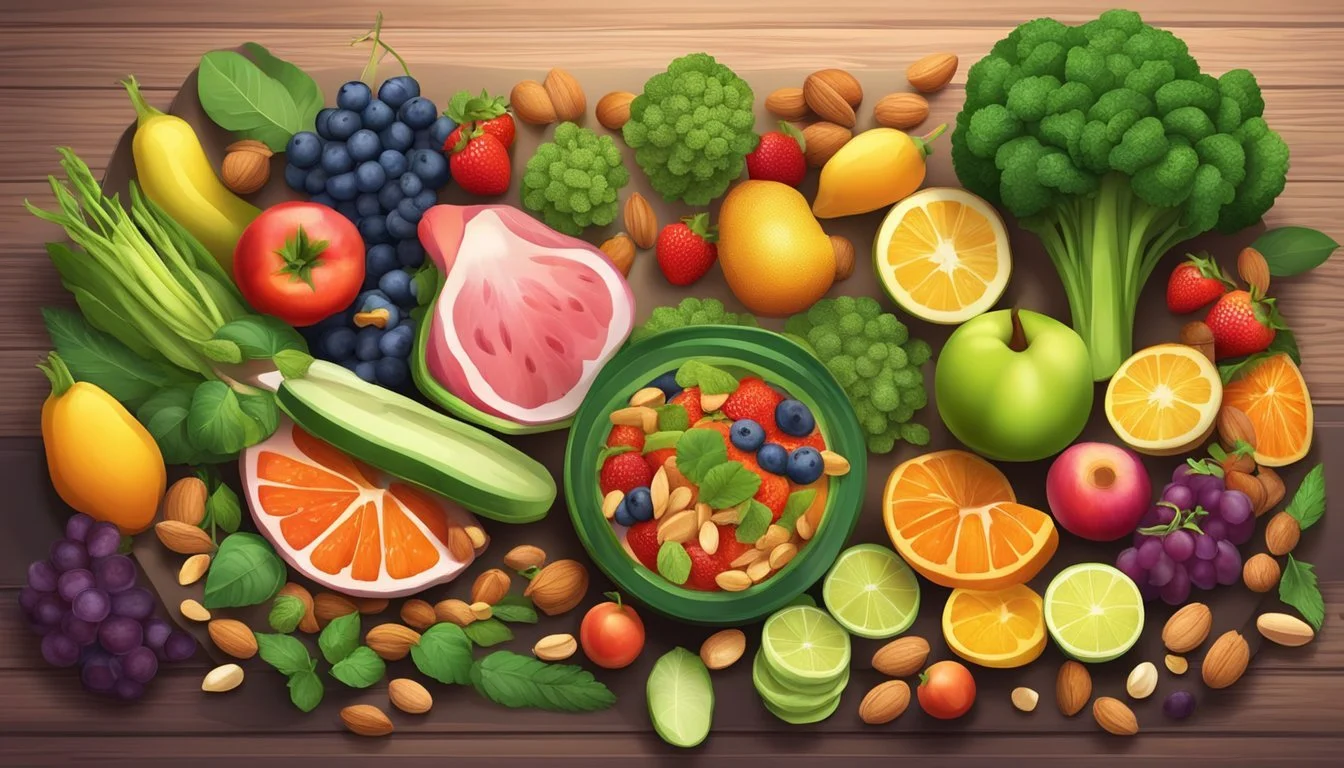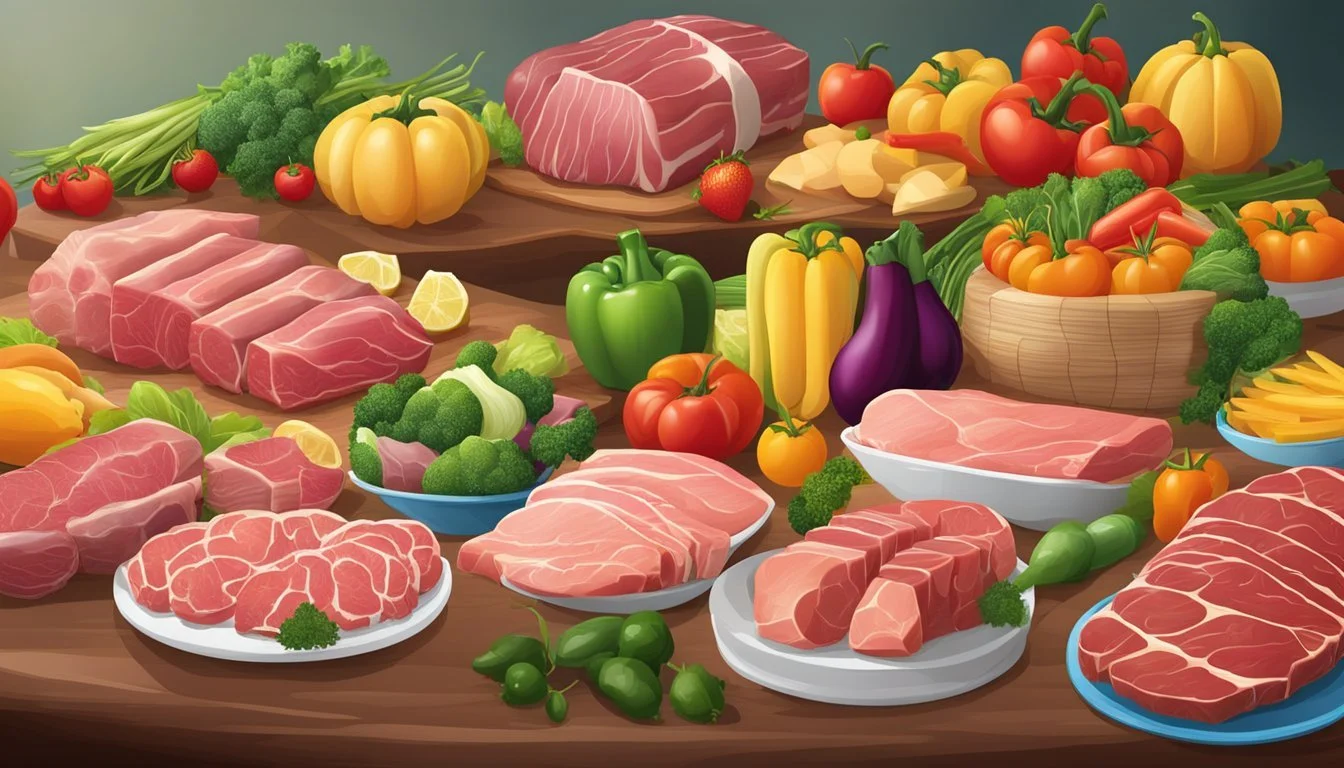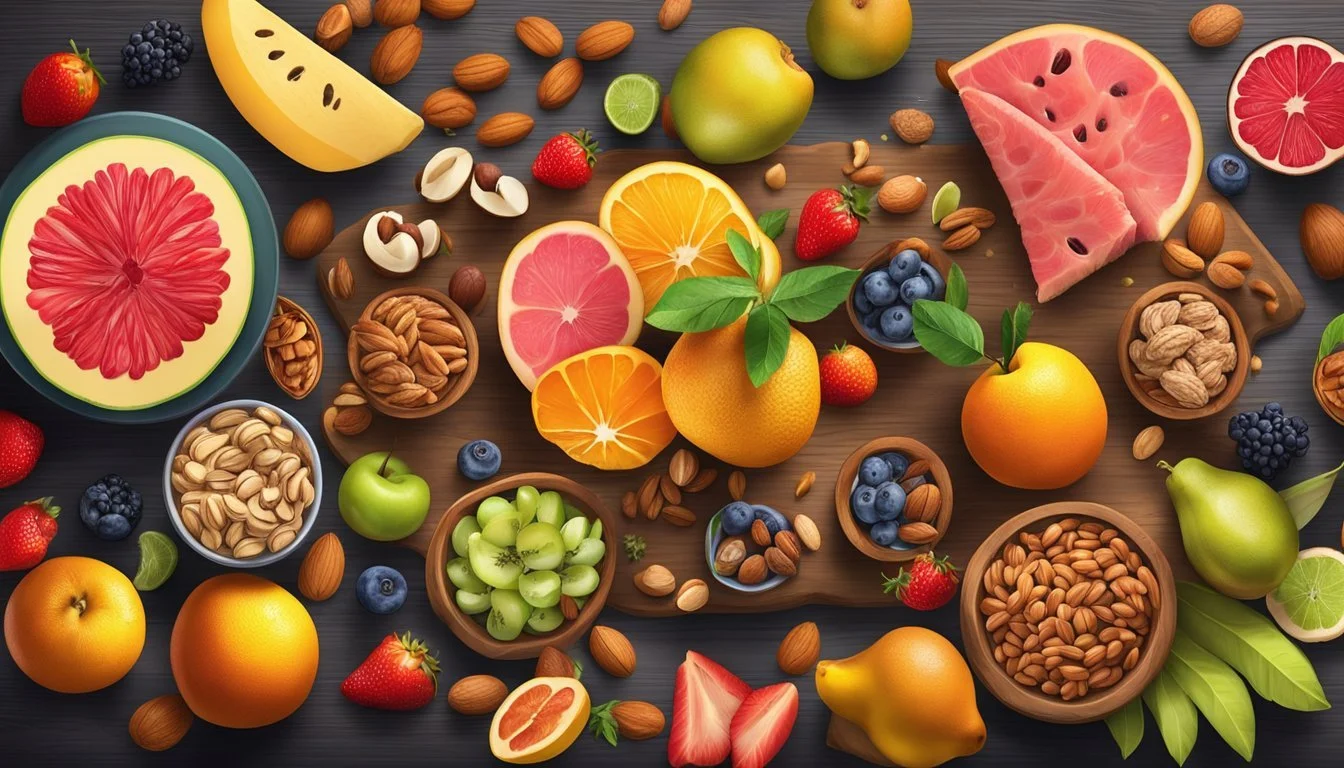The Best Paleo Diet Foods for a Quick Energy Fix
Optimal Choices for Sustained Vitality
The Paleo diet draws its core principles from the eating habits of our hunter-gatherer ancestors, emphasizing whole, minimally processed foods. Proponents of this dietary plan argue that modern eating habits are misaligned with human evolution, contributing to the current epidemic of chronic diseases. They claim that by reverting to a diet filled with foods that could be hunted or gathered, one can improve their health and energy levels.
To sustain energy throughout the day, those following the Paleo lifestyle focus on nutrient-dense foods that align with these ancient dietary patterns. This means that for a quick energy fix, practitioners are likely to reach for foods that provide sustained energy without spiking blood sugar levels. Such options include high-quality protein sources, healthy fats, and low-glycemic fruits, which can work together to fuel the body efficiently.
While traditional quick energy sources such as refined grains and sugars are excluded from the Paleo diet, alternatives are not lacking. Nutrient-rich snacks like no-bake fruit balls, made with natural sweeteners and nuts (What wine goes well with nuts?), offer convenient energy boosts while staying true to Paleo principles. Understanding the best Paleo diet foods for energy involves recognizing how different food groups contribute to lasting satiety and stable energy release, aiding those on the diet in maintaining vigor and focus throughout their day.
Understanding Paleo Basics
The Paleo Diet focuses on eating whole, unprocessed foods similar to what our pre-agricultural ancestors may have eaten, with an emphasis on optimizing health and energy levels.
Principles of the Paleo Diet
The Paleo Diet encourages consumption of unprocessed animal and plant foods, such as meats, vegetables, fruits, nuts, and seeds, while excluding items that result from modern agriculture and processing like grains, legumes, dairy, and refined sugar. The intent is to mimic the dietary habits of Paleolithic humans.
Health Benefits of Going Paleo
Adopting a Paleo lifestyle can contribute to numerous health improvements, including reduced inflammation and a lower risk of chronic diseases. This diet's focus on high-quality proteins and omega-3 fatty acids can aid heart health, while the avoidance of processed foods can support overall wellness.
Foods to Avoid on a Paleo Diet
Paleo dieters should avoid:
Grains (wheat, bread, pasta, rice)
Legumes (peanuts, lentils, peas, tofu)
Dairy products
Refined sugars and soda
Highly processed foods and artificial sweeteners
Importance of Macronutrients
Proper balance of macronutrients is key:
Proteins for muscle repair and growth
Carbs primarily from vegetables and fruits for energy
Healthy fats, such as those from avocados and nuts, for brain and hormone health
Fiber for digestive health
Planning Your Paleo Meals
A balanced Paleo meal plan should include a variety of food sources to ensure ample intake of vitamins and minerals:
Breakfast: could be eggs with spinach and avocado
Lunch and dinner: typically include a portion of protein with a large serving of vegetables
Snacks: often consist of nuts, seeds, or fresh fruit
Navigating Grocery Stores for Paleo
When shopping, focus on the perimeter of the grocery store where whole foods are stocked. Look for organic produce and grass-fed meats when possible. Labels should be checked to avoid products with added sugars and artificial ingredients.
Safe Usage of Supplements and Additives
While getting nutrients from food is preferred, a Paleo diet might necessitate certain supplements like vitamin D or probiotic supplements, if certain nutrients are hard to come by naturally. Always opt for supplements free of artificial sweeteners and additives.
Practical Tips for Dining Out Paleo
Eating out can be managed by:
Choosing meals that center around unprocessed meat and vegetables
Requesting substitutions for grains or dairy
Avoiding sauces and dressings that may contain hidden sugars or unhealthy fats
By understanding these basics, individuals can ensure that their Paleo diet is balanced, nutritious, and aligns with their health goals.
Quick Energy Paleo Foods
When adhering to the Paleo diet, selecting foods that provide a quick energy boost requires focusing on natural, nutrient-dense choices. The following subsections detail specific Paleo-friendly foods that cater to quick energy needs.
Fruits as Natural Energy Boosters
Fruits offer immediate glucose, a fast energy source. Bananas and apples are portable and rich in natural sugars and fiber. Oranges provide a burst of vitamin C, promoting iron absorption and energy release.
Vegetables for Sustained Energy
Sweet potatoes are high in carbohydrates and fiber, delivering steady energy. Other vegetables like carrots, celery, and Brussels sprouts are packed with vitamins and minerals, aiding in energy metabolism.
Lean Proteins for Muscle Support
Paleo-friendly proteins like chicken, turkey, pork, and eggs support muscle repair and contribute to prolonged satiety, which is essential for maintaining energy levels throughout the day.
Healthy Fats: Energy and Satiety
Incorporating healthy fats such as avocado, nuts, and seeds, including almonds, flax seeds, and olives, provides a sustained energy source. They are rich in omega-3 fatty acids which are crucial for brain health.
Simple Paleo Snacks
For a quick paleo snack, try nut butter, hard-boiled eggs, or homemade granola made with compliant ingredients. These snacks are convenient, nutritious, and energy-boosting.
Hydration for Energy Levels
Water is key to energy levels; even mild dehydration can lead to fatigue. Herbal tea can also act as a calorie-free hydration method, with certain blends offering additional energizing effects.
Seeds and Nuts for Nutrient Density
Seeds and nuts, such as almonds, are energy-dense and provide a wide array of nutrients, such as healthy fats, that fuel the body's energy needs and contribute to overall nutrition.
Selecting Meats and Seafood
Opt for grass-fed meats, wild-caught fish, and seafood like salmon, tuna, and cod. These provide high-quality protein and healthy fats for energy support. Sources like beef and bacon should come from responsibly-raised animals to ensure the highest nutrient content.
Energy-Enhancing Paleo Recipes
Incorporating energy-boosting foods into a Paleo diet can maintain vitality throughout the day. Here are carefully selected recipes that are not only aligned with Paleo principles but also aim to enhance energy levels at different times of the day.
Breakfasts to Kickstart Your Day
A robust start to the morning can provide sustained energy. Eggs are rich in protein and can be prepared in numerous ways such as boiled, scrambled, or as omelets with vegetables. Another quick option is a smoothie made with nuts and seeds, and antioxidant-packed berries, offering a refreshing energy boost.
Lunch Recipes for Midday Fuel
For lunch, salads rich in leafy greens and topped with lean meat such as chicken or turkey can deliver a punch of protein along with essential nutrients. One might also consider wrapping these ingredients with nori or lettuce leaves for a portable and convenient meal.
Dinner Ideas for Evening Vitality
Dinner meals often require more substance to recharge after a long day. Grilled or baked fish alongside steamed vegetables provides a balanced combination of omega-3 fatty acids and fibers. It's vital that the meal is filling without being overly heavy, ensuring sustained energy without fatigue.
Snack Options for Energy Top-Ups
When one needs a quick energy top-up, Paleo snacks such as fruit and nuts are ideal. Homemade energy bars with dates and nut flour serve as convenient on-the-go snacks. Similarly, a handful of dark chocolate can satisfy sweet cravings and provide a quick energy lift.
Paleo-Friendly Sweet Treats
Even on a Paleo diet, there's room for treats that provide energy. For instance, energy balls incorporating nuts, seeds, and dried fruits offer a concentrated source of nutrition and can be easily made without any baking.
Beverages for Energy Without Sugar
Staying hydrated is key for energy, and water should be the main beverage. Additional options include herbal tea or smoothies made with a base of coconut water or almond milk mixed with vegetables and fruit, providing not only hydration but also essential vitamins.
Simple Sides to Complement Main Dishes
Simple sides such as a salad of mixed greens or sautéed vegetables can complement any main course. They are quick to prepare and contribute to the overall nutritional content of the meal plan, adding fiber and various phytonutrients.
Preparing Paleo Meals Quickly
Planning is crucial for quick Paleo meal preparation. Prepping ingredients ahead of time or batch-cooking staple items like grilled chicken breasts and roasted vegetables can save time. Using a slow cooker for meats or stews can also ensure meals are ready without much hands-on time.
Each recipe chosen is designed to fit within a balanced Paleo meal plan, focusing on whole foods that provide energy and nutrition to support daily activities.
Maintaining High Energy Levels on Paleo
The Paleo diet emphasizes whole foods rich in nutrients to sustain energy levels. Carbohydrates are limited, which may require adjustments for sustained energy.
Balancing Macros for Optimal Energy
To maintain energy on a Paleo diet, one must balance macronutrients—protein, fat, and limited carbs. Protein provides lasting energy and satiety, while fats are essential for fuel and nutrient absorption. Include lean meats, omega-3 rich fish, and healthy fats like avocado and nuts. Limiting carbs to low-glycemic fruits and vegetables can stabilize blood sugar.
Lean Proteins: 20-30% of daily intake
Healthy Fats: 40-60% of daily intake
Carbohydrates: 10-30% of daily intake
Strategic Meal Timing
Meals should be spaced to regulate blood sugar and energy levels. Eating every 3-4 hours can prevent energy dips. A balanced Paleo breakfast jumpstarts metabolism, while including proteins and fats in snacks sustains energy between meals.
Exercise and Paleo Diet Synergy
Regular exercise complements the Paleo diet, enhancing metabolism and energy. Integrating aerobic and strength training maximizes health benefits and energy utilization. Post-workout meals should include protein to aid in muscle recovery and complex carbs for energy replenishment.
Tracking Your Nutrient Intake
Adequate intake of vitamins and minerals is critical for maintaining energy. One should monitor levels of vitamin D, potassium, and magnesium. Using apps to log meals helps ensure a well-rounded diet providing all the necessary nutrients.
Overcoming Energy Slumps
Temporary energy declines may occur from reduced carb intake. One can mitigate this by incorporating more root vegetables like sweet potatoes and beets. Monitoring hydration is important as water intake influences energy levels.
Snacks for Energy Slumps:
Nuts and seeds
Hard-boiled eggs
Berries and almond butter
Sustainable Paleo Lifestyle Tips
A successful Paleo lifestyle requires variety and planning. Structuring a meal plan ensures a mix of protein, fat, and carbs, preventing nutrient deficiencies. Drinking plenty of water and incorporating fermented foods like sauerkraut can boost energy and gut health.
The Future of Paleo and Energy
The Paleo diet's evolution is shaped by scientific findings and adaptations to modern lifestyles, focusing on enhancing energy and overall metabolic health.
Emerging Paleo Trends
Paleo trends are diversifying, with new recipes and snack options designed for energy boosts. Quick-energy foods such as nuts, seeds, and low-sugar fruits are gaining prominence, as they comply with Paleo principles and offer convenient, energy-rich options for those on the go.
Research on Paleo and Metabolic Health
Recent studies suggest a link between Paleo dietary patterns and improved metabolic health. Emphasis on lean meats, healthy fats, and vegetables—all low in glycemic index—is shown to potentially stabilize blood sugar levels, which is crucial for sustained energy throughout the day.
Adapting Paleo to Individual Needs
Personalization of the Paleo diet is becoming more common, acknowledging that individual nutritional needs vary. Tailoring meal plans to include a varied range of Paleo-friendly foods can help optimize energy levels, depending on one's lifestyle and activity level.
Paleo's Place in Modern Diets
As Paleo integrates into modern dietary habits, it's being recognized for its potential in maintaining high energy levels and nutritional health. The diet's focus on whole foods and elimination of processed items aligns well with contemporary movements towards eating for sustained health and vitality.
Resources for Paleo Diet Followers
A variety of resources are available for the Paleo community, including:
Guides on how to maintain a balanced Paleo meal plan
Nutritional information focusing on the energy-yielding aspects of Paleo-approved foods
Recipe books and blogs providing quick and energy-efficient Paleo meal options
The Global Impact of Paleo Choices
The Paleo diet's global impact highlights the shift towards sustainable eating practices. Prioritizing grass-fed meats and organic produce not only supports personal health but also encourages responsible farming practices, which can contribute to environmental sustainability.
Paleo Success Stories
Anecdotal evidence and success stories reinforce the Paleo diet's role in enhancing energy levels. Individuals often report increased vigor and improved physical performance when adhering to a Paleo meal plan, suggesting that this dietary approach can be a viable solution for those seeking to improve their health and vitality.
Conclusion
Adopting the paleo diet can lead to increased energy levels due to its focus on whole foods, rich in essential nutrients required for sustained stamina and health. Grass-fed meats offer a favorable ratio of omega-3 to omega-6 fatty acids, contributing to reduced inflammation and improved heart health.
One may also turn to high-energy paleo snacks like no-bake fruit balls—a convenient option packed with natural sugars and fiber, providing a quick energy boost. The role of vegetables cannot be overstated; they are foundational in the paleo diet, with nutrient-dense choices such as asparagus, avocado, and artichoke hearts being excellent options.
Those new to this diet may initially experience fatigue as their body adjusts. However, this is a transient phase, and their energy levels should normalize as they acclimate. The diet discourages processed foods and sugars, reducing the risk of energy spikes and crashes.
It's essential for individuals to listen to their bodies and ensure a balanced intake of protein, healthy fats, and carbohydrates. This harmony supports sustainable energy and overall wellness on a paleo dietary plan.





